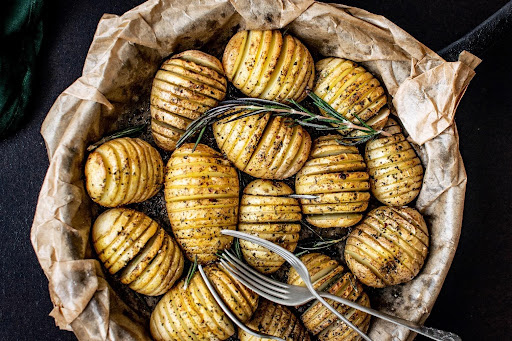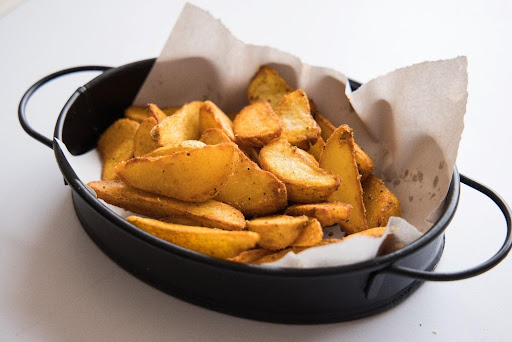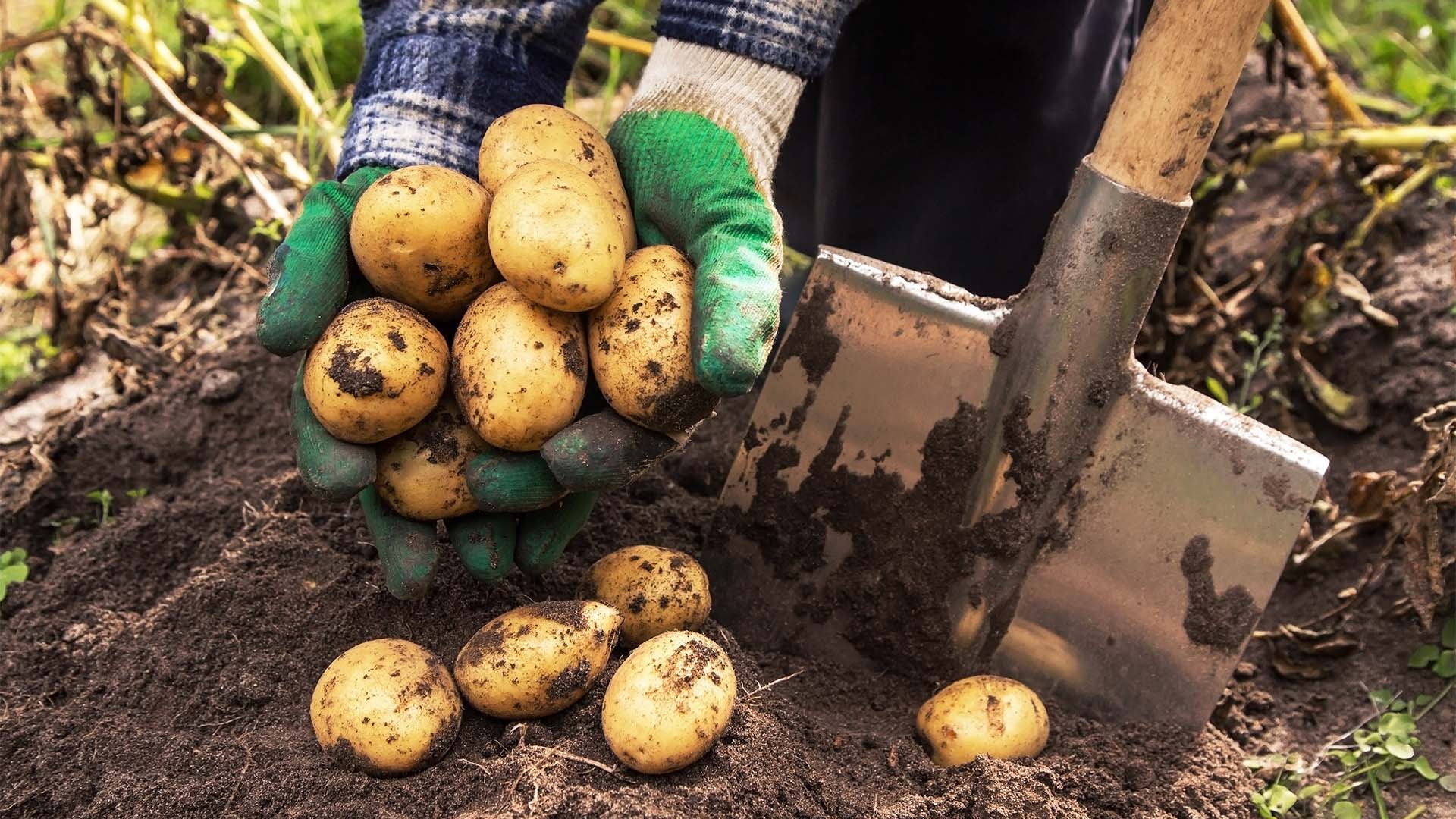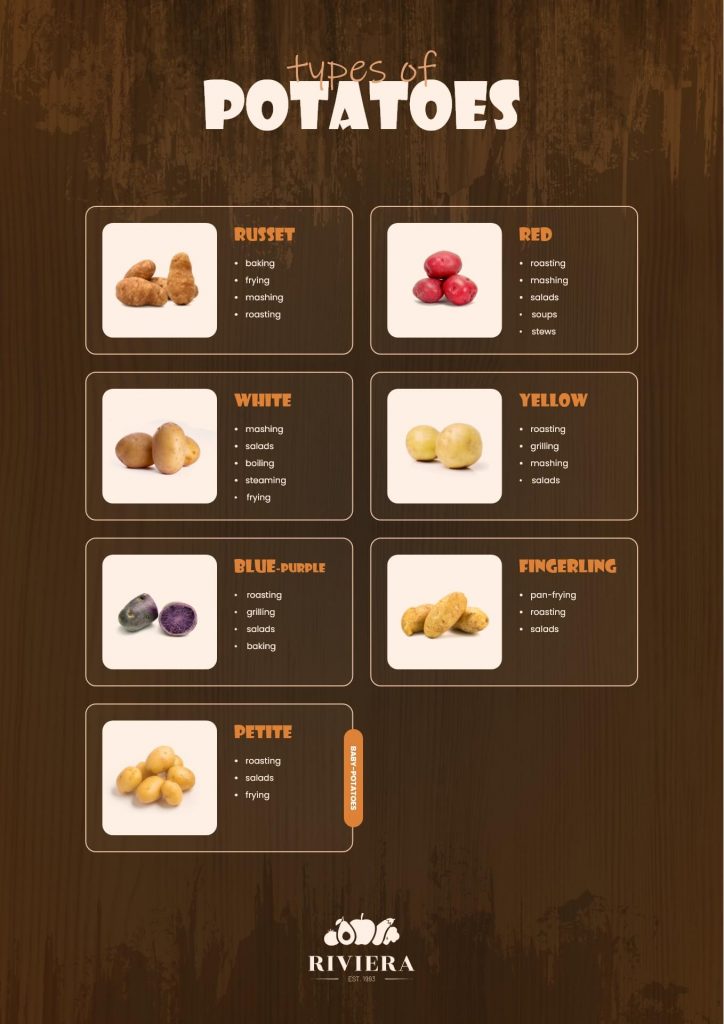Potato Varieties and Cooking Guide
Some potato varieties are always in high demand! We’ll talk about the most popular types, when to use them, and where to buy the best wholesale potatoes in bulk.

Oh, spuds, the ultimate comfort food! When you think about potatoes, a few types come to mind: sweet, starchy, red, russet. But did you know that some 5000 varieties are being grown all over the world? And in the U.S. alone, there are 200 different kinds of potatoes being sold, with 45 billion pounds harvested each year. These earth-flavored wonders are wholesome, incredibly versatile, easy to cook, and a convenient choice for any meal of the day.
For our fellow potato lovers out there (and restaurants in particular), we have prepared a “potatoes 101” covering their origins, types, growing regions, main varieties, and how to use them in the kitchen, as well as where to buy wholesale potatoes in bulk for your foodservice business!
1. Origins: from Ancient Peru to our Platters
Archaeological evidence suggests that the humble potato was first domesticated in Ancient Peru (in the South American Andes) by the Inca Indians, around 8,000 B.C. However, it was much later, when the Spanish conquered Peru in 1536, that this new and wondrous flavor reached the lands of Europe.
After that, the crop continued its journey and eventually made it to North America in the 1620s as a gift from the British to the governor of Virginia. Nontheless, the first permanent potato crops were planted only a century later in Derry, NH, from where they slowly spread to the rest of the country. Nowadays, the highest growing regions in the U.S. are Idaho, Washington, North Dakota, Wisconsin, and Colorado.
2. U.S. Potato Growers & The 7 Potato Varieties
More than 100 table-stock potato varieties are grown in the U.S. However, they all fit into one of these seven broad categories:
1. Russet: this is the ideal variety for a fluffy mashed potato dish! Russet potatoes have a mild and earthy taste profile, ranging from medium to large. They feature your classical white to pale-yellow flesh, which is ideal for baking, frying, mashing, and roasting.
2. Red: a thin, red-skinned potato variety, small to medium in size. Red potatoes are known for their waxy, smooth, and creamy consistency. They’re excellent for roasting, mashing, salads, soups, and stews.
3. White: another small to medium variety, you will immediately recognize this variety by its white flesh and thin peel that is perfect for grills. White potatoes are also dense, which means they hold their shape well after cooking, making them an excellent choice for mashing, salads, boiling, steaming, and frying.
4. Yellow: with its light tan to golden skin and yellow flesh, this popular potato variety is moist, velvety to the bite, with a rich and naturally butter-like consistency. Yellow spuds are excellent for roasting, grilling, mashing, and salad dishes.
5. Blue-purple: this oblong, small-to-medium potato variety is famous for its rich purple, blue, or vaguely red exterior. Likewise, the firm, moist, nutty flesh comes in different shades of blues, purples, and pinks. Aside from giving any dish a luscious appeal, blue-purple spuds are generally good for roasting, grilling, salads, and baking.
6. Fingerling: these stubby, miniature varieties are naturally elongated, slender, and come in a variety of colors. They’re waxy, thin-skinned, but robust and buttery in flavor, making them perfect for pan-frying, roasts, and salads. Not to be confused with new potatoes, which are young spuds with similarly thin skin and a crisp, waxy texture.
7. Petite (or Baby Potatoes): finally, these bite-sized spuds are similar to their larger cousins in taste and consistency but pack a more robust flavor in their tiny bodies. Great for roasts, salads, and fried dishes, petite potatoes can be cooked whole and need a much shorter prep time.

3. Types of Potatoes & How to Use Them in the Kitchen
1. Three Broad Types of Potatoes
Generally, we can speak about three broad types of potatoes in cooking: starchy, waxy, and all-purpose.
STARCHY
Typically long and coarse, starchy potatoes are best for baking and frying. They are high in starch, with a dry and grainy texture. They turn light and fluffy when baked and creamy if mashed. Additionally, they’re an excellent choice for French fries and deep-frying. The best starchy potato varieties are Russet, Idaho, and Yukon Gold.
WAXY
Waxy-textured potato varieties are low in starch and hold their shape quite well, making them perfect for boiling, soups, stews, gratins, and salads. Our favorite waxy varieties include New Potatoes, Rose Fin, French Fingerling, LaRette, and Red Thumb.
ALL-PURPOSE
All-purpose potato varieties fall somewhere between starchy and waxy. Obviously, they hold better than starchy varieties when cooked, but not as well as waxy types. Just think of them as a middleman between the two extremes. They’re an optimal choice for roasting, pan-frying, soups, stews, and gratins. Common all-purpose varieties include Peruvian Blue, Kennebec, Norland Red, Red Gold, and Purple Majesty.
2. Potato Cheat Sheet: Best Spuds for Each Cooking Method
BAKING: use varieties with a reasonably high starch content to create that soft and fluffy texture that people adore in baked potato dishes.
Recommended for baking: King Edward, Desiree, Vivaldi, Carolus, Melody, Estima, German Butterball
ROASTING: to cook the most delicious, crisp, and fluffy roasties, make sure to use “floury” potatoes, which give us these great crispy edges.
Recommended for roasting: Adrianne, Carolus, Yukon Gold, Maris Piper
MASHING: high-starch spud varieties make for the tastiest mashed potatoes, so be sure to avoid the waxy types!
Recommended for mashing: Yukon Gold, Russet, Yellow Potatoes, Desiree, Merlin, Marabel, Purple Peruvian, German Butterball
CHIPPING: if you want to pide into crispy-perfect chips, any spud won’t do. Choose firm, new, non-sprouted varieties, preferably Russet or Yukon Gold.
Recommended for chipping: Yukon Gold, Russet, Purple Peruvian, Maris Piper, King Edwards
FRENCH FRIES: for the yummies French fries, you’ll want spuds with the smallest amount of moisture. Therefore, we recommend high-starch and dense varieties like Idaho or Russet Burbank.
Recommended for French fries: Idaho, Russet Burbank
4. Where to Buy Wholesale Potatoes In Bulk
Potato dishes are always in high demand, and restaurants need a supplier they can rely on to deliver the freshest, most delicious batches. For peak quality and convenience, you can choose from our many wholesale potato varieties and order in bulk on our website.
Currently, you can order the following peak-season local varieties from the Mountain Sweet Berry Farm:
- German Butterball: a round, medium-sized specialty spud characterized by thin, flaky skin ranging from beige to rich yellow. Its golden flesh carries a savory, buttery flavor with an all-purpose use, including boiling, roasting, baking, mashing, and frying.
- Purple Peruvian: an heirloom of the Andean mountains, this specialty potato inherits the deep purple flesh and skin of a blue-purple spud combined with the small, slender shape of a fingerling. Unlike your usual waxy fingerling, it has a dry, starchy flesh resembling that of a Russet, making it perfect for mashing, baking, chipping, and deep-frying.
You can also find the following wholesale potato varieties:
- White Creamer Potatoes
- Fingerling Multi-Color Potatoes
- Fingerling White Potatoes
- GPOD Potatoes
- Fingerling Purple Potatoes
- Idaho Potatoes
- Kennebec Potatoes
- Purple A Potatoes
- Purple C Potatoes
- Red Bliss Potatoes
- Yam Medium and Jumbo Potatoes
- Yukon Gold (A, B, C) Potatoes
- Marble Multi-Color Potatoes

